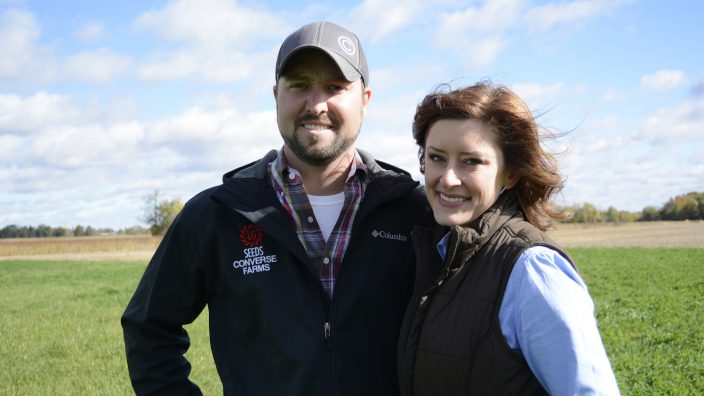Applications for Ohio Farm Bureau Health Plans now available
Members have three ways to apply: contacting a certified agent, calling 833-468-4280 or visiting ohiofarmbureauhealthplans.org.
Read MoreAccording to the Farm, Food and Agribusiness COVID-19 Impact Survey created by Ohio Farm Bureau, 65% of those involved in Ohio’s food supply system have been negatively or very negatively impacted by the global pandemic. The survey also shows that 5% of those surveyed have been positively impacted.
Dustin and Casey Jo Converse own and operate Crimson Knoll Cattle in Union County. They have been selling freezer beef from their farm for over 10 years, but this year has been a banner one so far as more and more consumers are reaching out to them for their beef needs.
“We are having a lot more conversations with folks who have never purchased freezer beef, and we are selling more this time of year than we normally do,” Casey Jo said. “Our biggest challenge is getting scheduled with the processor, but they have taken really great care of us and we are thankful for that.”
That is a good problem to have and the uptick in business has changed their business model. Crimson Knoll Cattle doubled in herd size in order to meet the increased local demand. Those types of on-the-fly adjustments are not easy and take some creativity and some foresight. The Converses almost took most of their cattle to the packing plant earlier this year, but decided to hold some of them back when the phone started to ring.
“Early on some customers that had just purchased a good amount of beef were inquiring about buying even more and then we started to hear from more and more people,” Dustin said. “At that point I knew that I had to schedule more dates with the butcher and if we didn’t do that we would have had to wait a couple more months for our beef to be processed.”
The Converses work with a few local processors, including Glenville Packing in Bucyrus, a small custom facility that also works in retail and wholesale markets.
“Normally this time of year we do about four beef a week and a couple of hogs,” said Glenville Packing’s Andrew Keets. “We are now up to 10 cattle and 10 hogs every week. We have hired a couple of new employees and we are all working twice as long just to keep up with demand.”
That pace of production will last quite a while, as the processing plant is at full capacity until the end of July.
“We know there are a lot of farmers worried about where their animals are going to go as their options begin to narrow,” Keets said. “Local plants like ours are working to try to accommodate farmers in our area to make sure those animals and the farmers’ hard work doesn’t go to waste.”


Members have three ways to apply: contacting a certified agent, calling 833-468-4280 or visiting ohiofarmbureauhealthplans.org.
Read More

Ryan Hiser has experienced first-hand the importance of having the opportunity to vote on issues that will affect his family operation and other farmers.
Read More

Bill Patterson, Cy Prettyman and Adele Flynn will continue to serve as officers for Ohio Farm Bureau Federation.
Read More

Delegates discussed many topics impacting agriculture including farmland preservation, local foods, and succession planning.
Read More

Twenty-six farmers govern the state’s largest farm and food organization.
Read More

The 2025 recipients are Fred Cooke (posthumous) of Richland County, Marvin Dietsch of Williams County, Steven Knollman of Hamilton County and Michele Miller (posthumous) of Ottawa County.
Read More

Nathan and Jill Parriman grow seasonal crops, including Christmas trees, pumpkins and cut flowers, providing U-cut experiences that invite customers to engage directly with agriculture.
Read More

The 2025 Distinguished Service Award recipients are Craig Adams, Mike Townsley, and Kellogg Farms, Kurt Farms and Stateler Family Farms.
Read More

Ohio Farm Bureau Treasurer Adele Flynn participated in the meeting, representing Ohio farmers.
Read More

For Ohio and PJM region, the outlook is reassuring—ample reserves and strong planning should keep the power on.
Read More